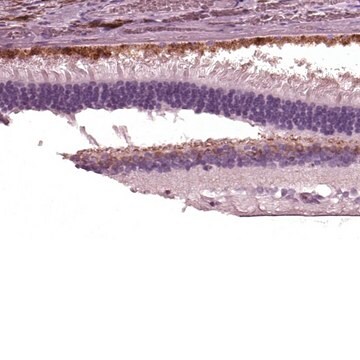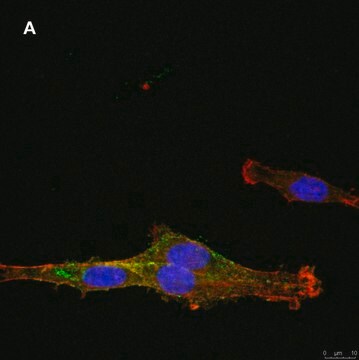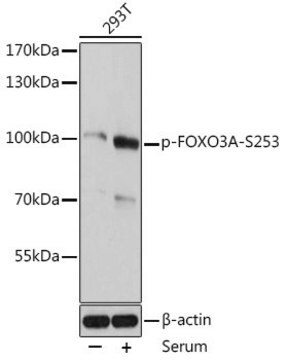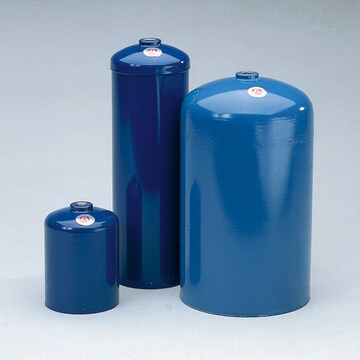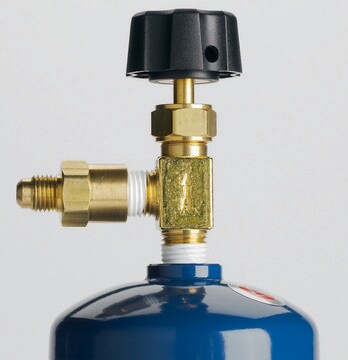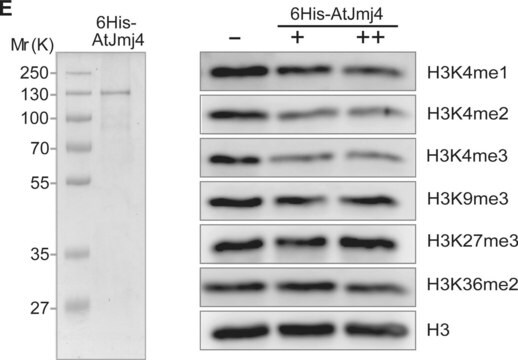MABS2773
Anti-c-Kit/CD117 Antibody, clone H2C7
Sinónimos:
CD117, EC:2.7.10.1, Mast/stem cell growth factor receptor Kit, Proto-oncogene c-Kit, SCFR, Tyrosine-protein kinase Kit
About This Item
Productos recomendados
biological source
hamster
Quality Level
antibody form
purified antibody
antibody product type
primary antibodies
clone
H2C7, monoclonal
mol wt
observed mol wt ~N/A kDa
purified by
using protein G
species reactivity
mouse
packaging
antibody small pack of 100
technique(s)
immunocytochemistry: suitable
immunohistochemistry: suitable
isotype
IgG
epitope sequence
Extracellular domain
Protein ID accession no.
UniProt accession no.
storage temp.
2-8°C
Gene Information
mouse ... Kit(16590)
Specificity
Immunogen
Application
Evaluated by Immunohistochemistry in E14 Mouse liver sections.
Immunohistochemistry Applications: A 1:25 dilution from a representative lot detected c-kit/CD117 in E14 Mouse liver frozen tissue sections.
Tested Applications
Immunohistochemistry Analysis: A 1:25 dilution from a representative lot detected c-Kit/CD117 in developing mouse forebrain frozen tissue sections.
Immunocytochemistry Analysis: A representative lot detected c-Kit/CD117 in Immunocytochemistry applications (Koma, Y., et al. (2005). Lab Invest. 85(3):426-35).
Immunohistochemistry Applications: A representative lot detected c-Kit/CD117 in Immunohistochemistry applications (Yamatani, H., et al. (2004). J Comp Neurol. 475(2):247-60; Takagi, K., et al. (2008). Neuroscience. 153(4):1278-88).
Note: Actual optimal working dilutions must be determined by end user as specimens, and experimental conditions may vary with the end user.
Target description
Physical form
Reconstitution
Storage and Stability
Other Notes
Disclaimer
¿No encuentra el producto adecuado?
Pruebe nuestro Herramienta de selección de productos.
Storage Class
12 - Non Combustible Liquids
wgk_germany
WGK 1
flash_point_f
Not applicable
flash_point_c
Not applicable
Certificados de análisis (COA)
Busque Certificados de análisis (COA) introduciendo el número de lote del producto. Los números de lote se encuentran en la etiqueta del producto después de las palabras «Lot» o «Batch»
¿Ya tiene este producto?
Encuentre la documentación para los productos que ha comprado recientemente en la Biblioteca de documentos.
Nuestro equipo de científicos tiene experiencia en todas las áreas de investigación: Ciencias de la vida, Ciencia de los materiales, Síntesis química, Cromatografía, Analítica y muchas otras.
Póngase en contacto con el Servicio técnico